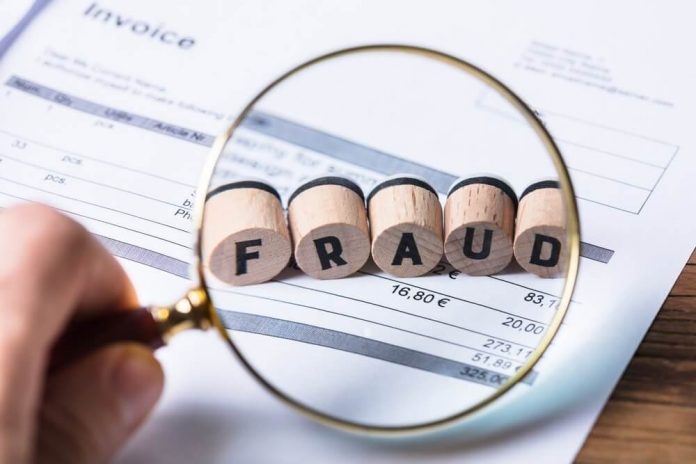This article is written by Rashmi Jha, from Amity University, Mumbai. This article focuses on insurance fraud, especially health insurance fraud.
Table of Contents
Introduction
The world is full of risks and uncertainties. People, assets and properties come under different types of risks, including the uncertainty of misfortunes of life, wellbeing, resources, property, and so on. While it’s anything but consistently conceivable to keep undesirable occasions from happening, the monetary world has created items that secure people and organizations against such misfortunes by repaying them with financial assets. Protection is a monetary item that diminishes or dispenses with the expense of misfortune or the impact brought about by various sorts of dangers. To defend the interest of individuals from misfortune and vulnerability, insurance has advanced as an interaction of reimbursing individuals against misfortune and uncertainty. It might very well be depicted as a social device to diminish or take out the risk of misfortune to life and property.
Apart from protecting people and organizations from numerous sorts of expected risks, insurance contributes a great deal to the overall financial development of the country by giving security to the working of interaction. The protection businesses foster monetary foundations and diminish vulnerabilities by improving monetary assets. It additionally gives solidness to the working of organizations and creating long-haul monetary assets for the mechanical undertakings.
Among other things, the insurance area likewise energizes the excellence of reserve funds among people and creates occupations for millions, particularly in a nation like India, where reserve funds and work are significant. With all these benefits, there is a great risk of insurance fraud. Almost 45,000 crore insurance frauds took place in India in the year 2019. Most insurance companies lose 10-15% in all areas of business, and fraudulent health insurance claims can be as high as 35%. The remaining 10% of insurance frauds are related to organized planned accidents. In life insurance, most fraud cases will occur when the insured amount is between 20,000 and 1.2 million.
The ABCs of insurance fraud
India is one of the largest insurance company markets in the world; however, it should also be understood that India’s insurance business is not without risks, because Indian insurance companies face an unusually high rate of fraud. It is estimated that the Indian insurance industry loses approximately US$6 billion due to insurance fraud in the country, accounting for approximately 8.5% of all insurance premiums each year.
All types of insurance policies are susceptible to fraudulent claims, but the probability of false claims in life insurance policies is six times that of other types of insurance policies. The Federation of Indian Chambers of Commerce and Industry (FICCI) defines insurance fraud as “The act of making a statement known to be false and used to induce another party to issue a contract or pay a claim. This act must be willful and deliberate, involve financial gain, done under false pretences and be illegal.”
Health insurance misrepresentation can be explained as a condition where a safeguarded, or clinical benefit supplier outfits extortion, fraud, or deluding data to the guarantor to accomplish off-the-mark benefits from a strategy for the policyholder or administration giving source.
Fraudulent and dishonest claims are major morale and moral hazard, not only for the insurance industry but even for the entire nation’s economy. Insurance fraud is more common in semi-urban and rural areas where insurers might not have adequate infrastructure for a thorough inspection. The impact of fraud in health insurance is not merely limited to a loss for the insurer but is more perilous since it might prevent a genuine customer from accessing their rightful claim.
How fraud happens
Fraudsters are becoming more and more innovative. New methods of defrauding insurance companies are used almost every day. The most common way to deceive a company is to buy insurance for a terminally ill person. This will not happen in cities of India. However, there is not much infrastructure in rural India, so it is not difficult to obtain insurance for patients. Doctors who check patients for pre-existing conditions receive bribes or threats. If the person has cancer, the doctor will prepare a report stating that they can get insurance. Later, when the patient dies of cancer, the insurance money is defrauded.
Insurance companies in India provide consumers with compensation, if someone dies in an accident, the amount of compensation is twice the amount of insurance. This clause has also been abused to assert fraudulent claims. If the insured dies naturally, their survivors claim that the insured died accidentally; doctors and nurses again face the threat of obtaining relevant documents, which causes high losses to the insurance company.
Health insurance and motor insurance are also vulnerable to fraud. In these cases, counterfeiting is the norm. There are many hospitals in India whose sole purpose is to provide false documents for insurance claims. Before the insurance company can find out what happened, the scammers pack up and move elsewhere to start again.
The remedies for fraud across the insurance value chain include compliance with KYC procedures, pre-medical check-ups, timely renewals, and better services by the insurance industry. The Insurance Regulatory and Development Authority of India (IRDAI) has also issued guidelines that all insurance companies registered in India are required to have in place an Anti-Fraud Policy duly approved by their respective Boards.
Health insurance fraud in India
Health insurance fraud may be defined as a scenario wherein an insured or scientific provider company furnishes fraud, fake or deceptive statistics to the insurer intending to gain unfair blessings from insurance for the coverage holder or provider offering source. Such fraud ends in critical losses for the coverage provider companies, however, it can additionally impact the medical insurance benefit for true customers. Also, ‘semi-city and rural areas’ have witnessed greater instances of health insurance fraud compared to metro cities.
It is difficult to explain the types of health insurance fraud because the nature of deceit continues to change over the years. The most common frauds are:
- Filing a declaration for remedies or offerings that had been by no means administered. This is frequently achieved through forging affected person records and production admission in connivance with carrier providers.
- The increasing cost of hospitalization consists of treatments that were not necessary for the medical problem.
- Misrepresenting treatment that isn’t protected as a medical necessity.
- Non-disclosure of pre-existing diseases and production prognosis reviews to justify tests, examinations and surgical procedures to show declare worthiness.
How insurers are fighting with the frauds
In any industry, the event of fraud features gaps that exist in the current cycles and operational system. This way it justifies a quick evaluation and amendment of the cycle and partners. Well-being guarantors are continually watching out for all potential strategies to handle the danger of fraud.
Some of the ways in which insurers try to control frauds are:
- Severe guidelines and standards concerning organizing clinics and medicines for major diseases.
- Formation of concentrated data set of all deceitful cases recorded to show up at prescient pattern lines concerning specialist co-op and petitioner.
- A committed ‘extortion anticipation unit’ that participates in field examinations to check speculated cases.
- Better due timelessness in arrangement for people.
- One of the greatest aftermaths of any protection misrepresentation is the expense that that different client would need to pay. Because of the idea of pooling changes in the area, the expansion in occurrences of fakes could prompt the ascent of cost of administrations. Additionally, a stricter investigation of cases would bring about the postponement in settlements. Furthermore, at least once, this fraud could raise questions over any of the cases of accidental insurance claims to the clients.
Insurers are doing everything they can to beat the evil impacts of extortion and headway in innovation could assist with going far in this battle. Lawful help with appropriate corrective code to rebuff such crime from the side of the government will likewise assist the organizations with lessening the number of cheats.
Remedies for insurance fraud
- In India, there’s no special provision for coverage of fraud within the Indian Penal Code, 1860. Some sections which have a few relevances are Section 205 (impersonation of fake identification for performing or intending in a lawsuit or regulation enforcement), Section 420 (fraud and cheating induction of the switch of property), Section 464 (coaching of a fake record containing characters, stamps, and forgeries), and Section 405 (crook breach of trust). However, those provisions are inadequate to prosecute a fraudster in today’s prepared coverage fraud scenario.
- It isn’t always commonplace to take criminal motions towards coverage fraud in criminal complaints in our courts, and fraud on quantities that isn’t always big sufficient is acceptable, instead of the time and strength invested in prosecuting it. Risk control might be the main subject of insurers and commercial enterprise executives who want to re-examine their approaches and guidelines with the purpose to control and mitigate the threat of fraud.
- As the Indian insurance industry matures, fraud risk management is becoming a major challenge facing insurance companies and business leaders. Insurance companies need to constantly review their processes and policies to manage and reduce the risk of fraud. The risk of insurance fraud, internal and external factors can emerge in the insurance value chain. The risk of employees misusing confidential information and conflicts with fraudsters is increasing, and insurance companies need to implement internal controls and balances to minimize such problems. External fraud risks can be divided into several stages: customer registration, underwriting, reinsurance, and claims settlement. The severity of fraud can range from slight exaggeration to deliberate loss of insurance assets.
- Business leaders understand the way to cope with this threat, however, the lack of a method to control fraud is a matter of concern. Insurance fraud is a large problem, affecting the lives of harmless people, each at once via injuries and willful harm or damage, and circuitously as those crimes cause coverage rates to upward thrust each year. Honest clients shouldn’t pay the fee of scammers at better rates. Compared to different crimes, coverage fraud judgments are milder and lower. If the Indian coverage enterprise is presently running to lessen fees, one in all its fundamental focuses in controlling or decreasing fees is on proactively finishing fraud, this may be completed via a powerful fraud threat evaluation application and with committed research devices in every organization.
- Before reporting a case, attention to the right functioning of the regulation has to be raised. Central and kingdom governments must also provide critical concepts to enact unique legal guidelines to fight coverage fraud and set up coverage fraud bureaus. Academicians around the sector and anti-fraud experts running withinside the coverage enterprise trust that India has to take into account the Insurance Fraud Control Act, according to the legal guidelines of diverse US states, as a place to begin the dialogue for the bill in the parliament as quickly as possible.
- As the Indian insurance industry strives to reduce costs today, one of the main areas of its cost control or reduction activities is proactive fraud prevention, which can be achieved through an effective risk assessment program. The government should take measures because banks can determine a person’s creditworthiness by consulting the Credit Information Bureau of India (CIBIL). If insurance companies do this, they can obtain information about a person’s insurance history and claim records in the future. The sharing of knowledge and data should be a common practice amongst all insurers and the regulator and more so with the victims of fraudulent insurance claims.
Conclusion
Although India has various policies and institutions to deal with insurance fraud, we still see many cases of fraud and loss against businesses. As we have seen, many insurance fraudsters in our country are losing business. Approximately Rs. 40,000 crores per year, accounting for 8.5% of industry sales. Individuals and insurance companies should also strengthen the prevention of false claims because they need to ensure that the claims paid by insurance companies are valid. India is very much in need of an insurance fraud law to control all types of insurance fraud at home and abroad.
References
- https://www.policybazaar.com/health-insurance/individual-health-insurance/articles/health-insurance-frauds-in-india/
- https://www.outlookindia.com/outlookmoney/insurance/health-insurance-frauds-types-impact-and-ways-to-fight-it-3353
LawSikho has created a telegram group for exchanging legal knowledge, referrals, and various opportunities. You can click on this link and join:
 Serato DJ Crack 2025Serato DJ PRO Crack
Serato DJ Crack 2025Serato DJ PRO Crack











 Allow notifications
Allow notifications



